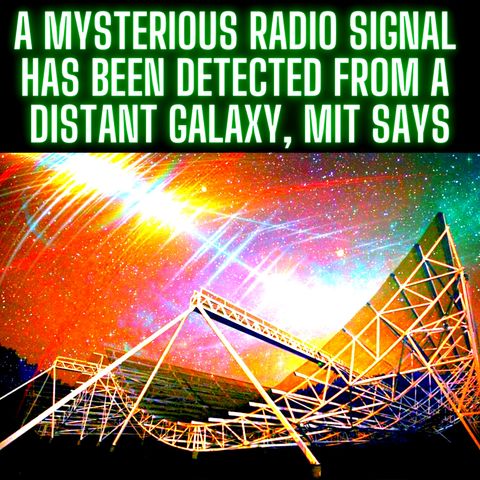A mysterious radio signal has been detected from a distant galaxy, MIT says

Descarga y escucha en cualquier lugar
Descarga tus episodios favoritos y disfrútalos, ¡dondequiera que estés! Regístrate o inicia sesión ahora para acceder a la escucha sin conexión.
Descripción
A mysterious radio signal has been detected from a distant galaxy, MIT says Astronomers have detected an unusual radio signal from a far-off galaxy, according to MIT officials. The signal...
mostra másAstronomers have detected an unusual radio signal from a far-off galaxy, according to MIT officials.
The signal is a fast radio burst, an intensely strong burst of radio waves, the Massachusetts Institute of Technology said in a statement. Usually, the mysterious signals last for a few milliseconds at most. But this one lasted up to three seconds and included bursts of radio waves every 0.2 seconds, in a clear periodic pattern.
The discovery was reported last week in the journal Nature by members of the CHIME/FRB Collaboration.
The Canadian Hydrogen Intensity Mapping Experiment, or CHIME, is a radio telescope in British Columbia, Canada. CHIME is designed to pick up radio waves emitted by hydrogen in the earliest stages of the universe. It also can detect fast radio bursts, or FRBs, and it has found hundreds of them, MIT said.
Coauthors of the paper include Calvin Leung, Juan Mena-Parra, Kaitlyn Shin, and Kiyoshi Masui at MIT, along with Daniele Michilli. Michilli led the discovery of the FRB, first as a researcher at McGill University and then as a postdoctoral researcher at MIT, the university said.
CHIME picked up a signal of a potential FRB on Dec. 21, 2019, and it immediately drew the attention of Michilli, who was scanning the data, the university said.
“It was unusual,” Michilli said in the statement. “Not only was it very long, lasting about three seconds, but there were periodic peaks that were remarkably precise, emitting every fraction of a second — boom, boom, boom — like a heartbeat.”
The burst, designated FRB 20191221A, is the longest-lasting FRB, with the clearest periodic pattern, detected to date, MIT said.
While the origin of FRBs is uncertain, astronomers suspect the signal could come from either a radio pulsar or a magnetar, two types of neutron stars, which are the collapsed cores of massive stars. The source is located in another galaxy, several billion light-years from earth.
“There are not many things in the universe that emit strictly periodic signals,” Michilli said. “Examples that we know of in our own galaxy are radio pulsars and magnetars, which rotate and produce a beamed emission similar to a lighthouse. And we think this new signal could be a magnetar or pulsar on steroids.”
The astronomers hope to observe more bursts from FRB 20191221A, which could help to refine their understanding of its source, and of neutron stars in general, the university said.
“This detection raises the question of what could cause this extreme signal that we’ve never seen before, and how can we use this signal to study the universe,” Michilli said. “Future telescopes promise to discover thousands of FRBs a month, and at that point we may find many more of these periodic signals.”
RSLASH: BEST Of True Alien, Ghosts, Unexplained and Bigfoot Stories 2022
Información
| Autor | Gawid Entertainment Podcasts |
| Organización | Gawid Entertainment |
| Página web | - |
| Etiquetas |
Copyright 2024 - Spreaker Inc. an iHeartMedia Company
